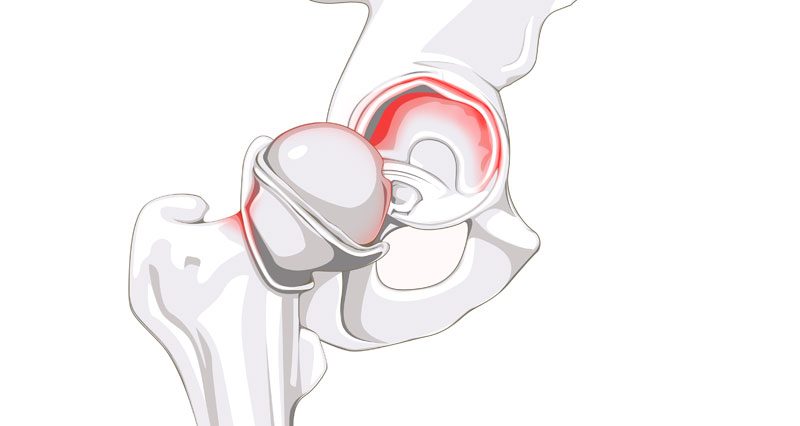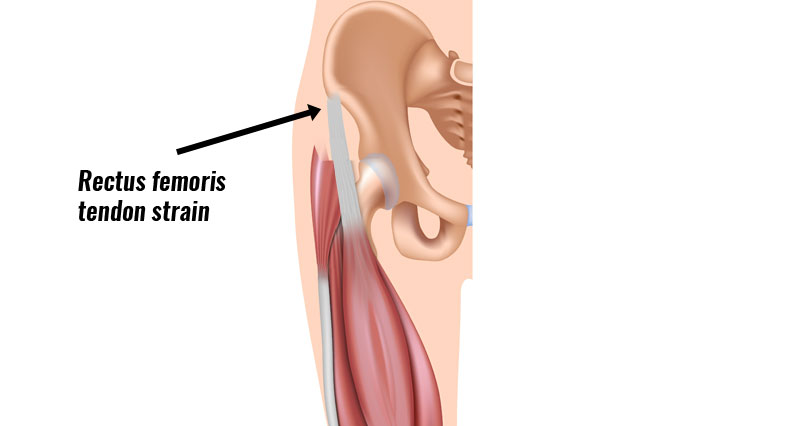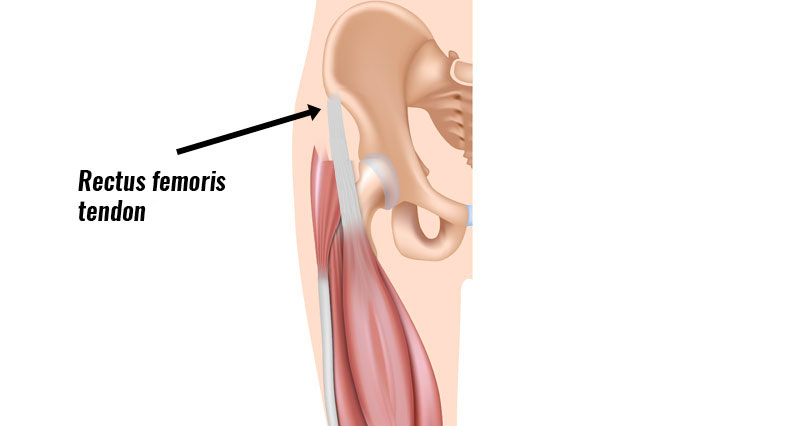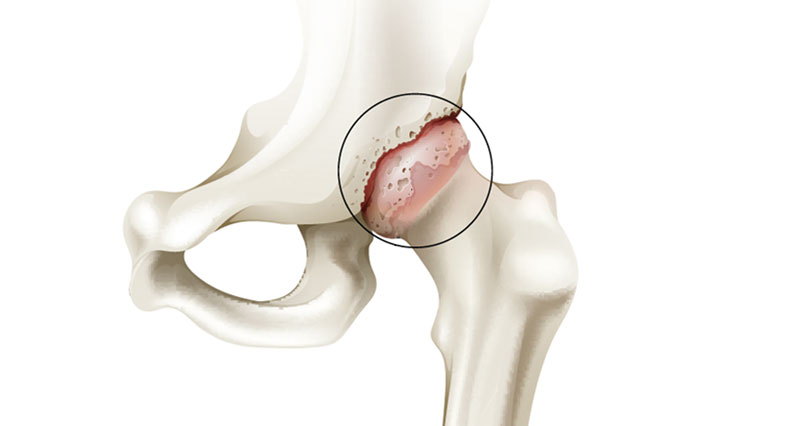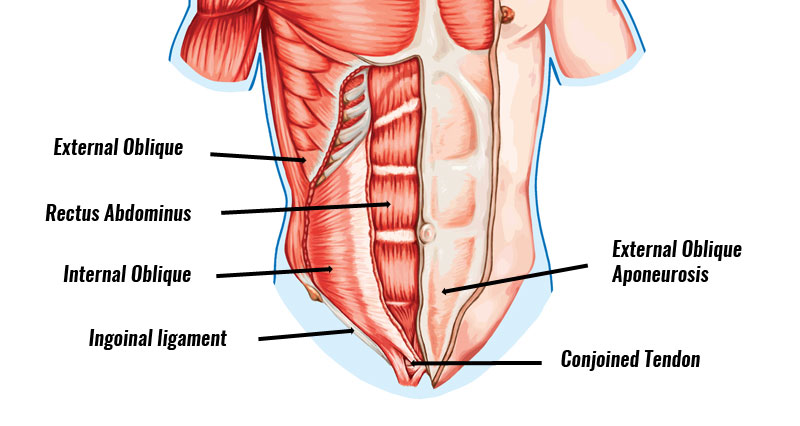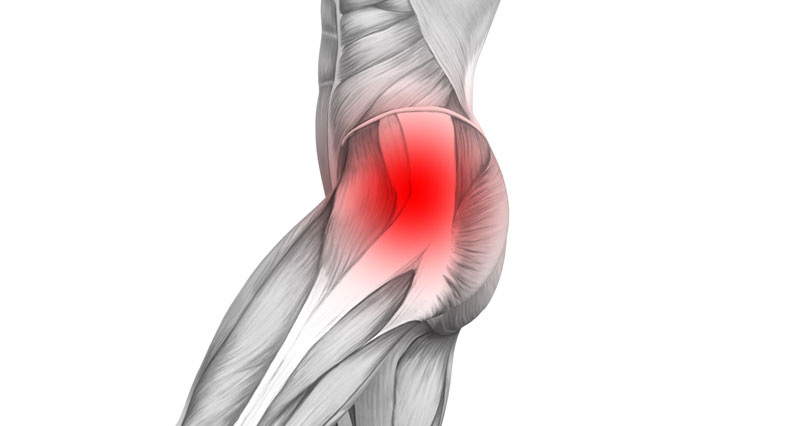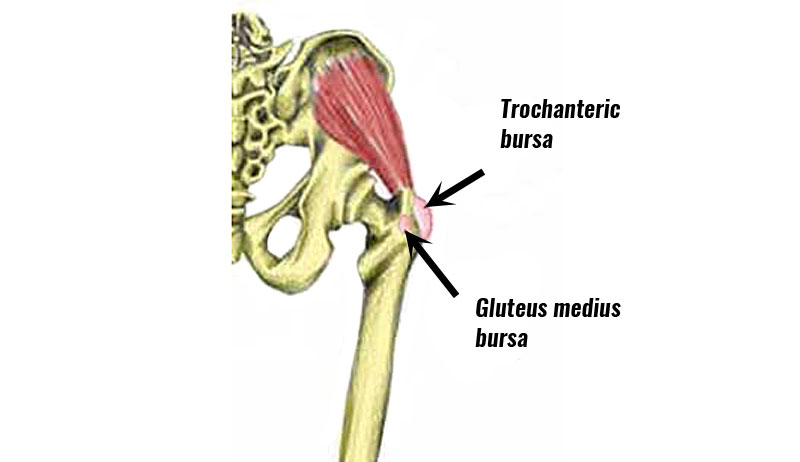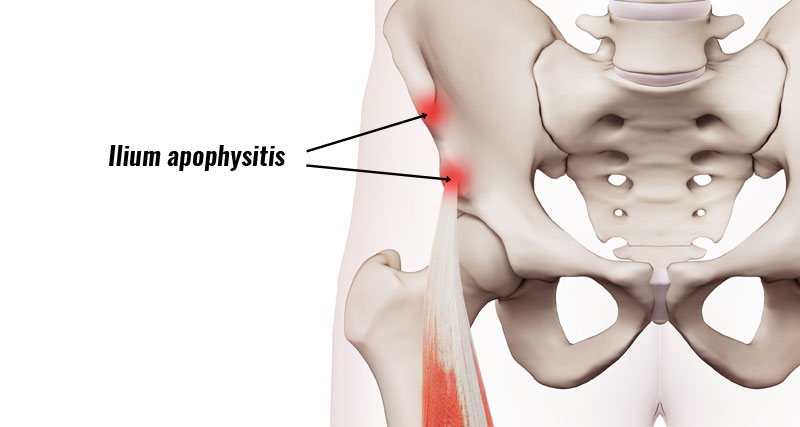A labral tear of the hip joint is a tear to the cartilage lining of the hip joint, caused either by direct trauma, or gradual degeneration.
Labral tear symptoms & diagnosis
Symptoms of a labral tear of the hip may come on suddenly following an impact or trauma but can also develop gradually if the joint progressively degenerates. They include:
- Hip pain
- Groin pain
- Clicking or locking of the joint
- Stiffness and restricted hip mobility
To test for a labral tear of the hip your physio lifts your hip up to 90 degrees of flexion, then internally rotates it. Any pain or restriction may indicate a labral tear. However, the only way to accurately diagnose a labral tear 100% is with an MRI scan.
Anatomy
The hip joint comprises the femur (thigh bone and the pelvis). The part or socket in which the femur sits is the acetabulum. A ring of cartilage called the labrum lines the acetabulum.
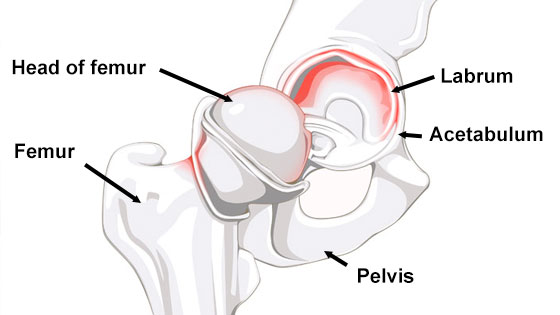
The labrum provides cushioning and support for the hip joint. Tears can occur in the labrum, also known as a hip labral tear or acetabular labral tear.
What causes a Labral tear?
Labral tears can be acute, caused by trauma such as traffic accidents, collisions, bad falls, falling onto the outside of the hip, or twisting on a hip that has a lot of weight on it. They also occur gradually through repetitive strain, for example in golfers.
Impingement of the labrum, known as Femoroacetabular impingement also causes a labral tear. There are two types of impingement which occur either in isolation or both at the same time. These are Cam impingement and Pincer impingement.
Cam impingement
Cam impingement occurs when the neck of the femur or thigh bone becomes enlarged or thickened due to additional bone growth. This then impinges on the hip joint and over time causes injury to the labrum. Also called a Ganz lesion it is present in almost 80% of patients with femoral acetabular impingement.
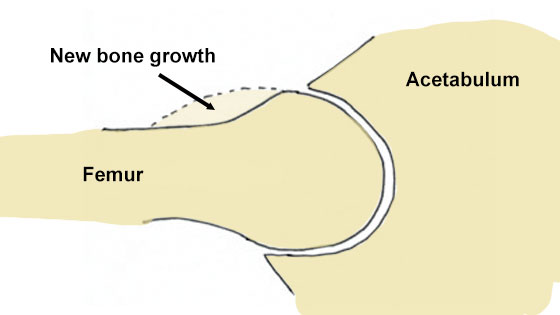
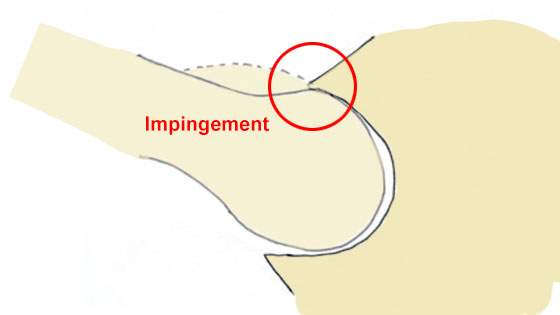
We don’t know exactly what causes cam impingement. One theory is overloading the growth plates of the femur as an adolescent, for example in hurdling, horse riding, and breaststroke swimming. They all involve repetitive twisting forces at the hip.
Another theory is genetic factors in that it is simply hereditary as siblings are much more likely to develop impingement.
Pincer Impingement
Pincer impingement occurs when a bony growth or spur at the acetabulum impinges on the femur.
Treatment of labrum tears
Treatment usually requires surgery known as debridement via an arthroscopy (key-hole surgery).
The torn part of the labrum is removed. Generally, results from this procedure are very good.
A rehabilitation program should be followed after surgery to restore full strength and movement to the hip joint and prevent further injuries or instability.
If left the injury could degenerate into a worn hip joint with eroding of the hard cartilage on the ends of the bone and the development of Osteoarthritis in the hip.
Surgery
Surgery to repair a torn labrum consists of removing the torn tissue and cleaning out fragments from the joint.
References
- Dwyer MK, Jones HL, Hogan MG et al. The acetabular labrum regulates the fluid circulation of the hip joint during functional activities. Am J Sports Med 2014;42(4):812–9
Scientific research
Hip Labral Repair Failure
A study concluded that Isolated labral debridement was found to result in high rates of failure and reoperation. One third of patients were converted to arthroplasty (hip replacement) and half of patients meeting criteria for reoperation or clinical failure. However, the remaining patients who did…
